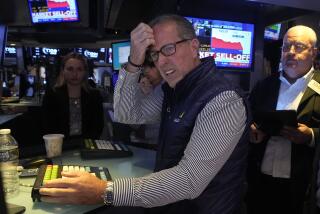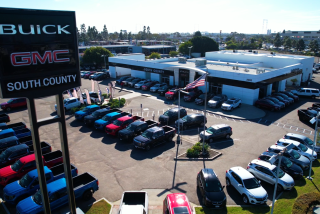What an Economy in Low Gear Means : Surge in Sales of Heavy Trucks Points the Way Toward Shifting Into High
- Share via
Strong U.S. sales of heavy-duty trucks, and the profits of companies supplying the truck makers, offer a contrary indicator to investor fears of a global economic slump, which set stock markets trembling here and abroad last week.
Truck sales for Navistar, PACCAR, General Motors, Ford and others are at their best levels in three years, up 27% in the first half of 1992 and accelerating in recent months.
And that has meant good earnings increases for a host of companies making engines, parts and production equipment for the motor vehicle industry--such as Eaton Corp., Modine Manufacturing, Dana Corp., Cummins Engine, Cincinnati Milacron, Parker Hannifin and many others.
Sales of the big trucks, the 18-wheelers you see along the highway with names like Kenworth, Harvester, Peterbilt, GMC and others, are important signposts for the economy. If trucking companies such as Roadway Services, J.B. Hunt and Consolidated Freightways are ordering new trucks at $80,000 to $150,000 apiece, it means there is freight to be moved and reasonably good times ahead. “We expect truck demand to continue growing through 1993,” says analyst Keith Dunne of the Milwaukee brokerage Robert W. Baird & Co.
The business puts flesh on the bare economic statistics that say growth this year will be 1.5% to 2%. Business is neither robust nor anemic. U.S. truck makers will sell about 135,000 heavy duty trucks this year, a big improvement over last year’s 106,000 but not as good as the 150,000 trucks a year they sold in the mid-1980s.
And profit margins have narrowed also since those banner years. From making 8 cents after taxes on every dollar of sales, many companies now are making 4 cents.
But keep in mind that U.S. manufacturers of industrial equipment are making that money with one hand tied behind their back. The European market, a major source of business for U.S. manufacturers, has been stalled this year. Latin American markets are growing in importance, but don’t yet supply U.S. companies with the 20% and more of business that Europe normally does.
So success is coming from serving the home market more efficiently and seeking out new markets abroad. And that’s a story of industrial reform in action.
Ten years ago most U.S. manufacturers couldn’t make a profit at this level of business. But the 1982 recession and the wrenching effects of an overvalued dollar in the early 1980s forced a restructuring of companies based in Cleveland, Toledo, Dayton, Cincinnati, Racine, Wis., and Moline, Ill.
Cleveland-based Eaton, for example, supplies axles, transmissions and brakes to the traditional U.S. motor companies in Detroit and to the new companies--Japanese, German and American--in the new industrial belt in Tennessee, Kentucky, South Carolina. In the last decade, it has sold some operations, purchased others, cut costs, opened plants in non-union states--but held onto roughly the same number of employees--and continued to spend for product development.
As a result it has almost tripled earnings on a 65% expansion in sales. “We made sacrifices in the ‘80s, but now we’ve got the basics lined up,” says Chairman William Butler.
Ten years ago Navistar was International Harvester, a bloated relic of 19th-Century industry that barely made money in good times, and lost buckets in bad times. Now the Chicago-based company, though loaded down with past pension costs, is a profitable and efficient maker of medium and heavy trucks.
The business of parts and tools isn’t glamorous, but can be attractive. TRW Inc., known in recent years for aerospace and high-technology, is going back to its roots in auto parts, stressing capabilities in power-steering and air bag equipment. It hopes to get 70% of its $8 billion sales from automotive equipment within the next few years, from 50% at present.
U.S. suppliers are primed for international markets. PACCAR, based near Seattle, has built new facilities to supply its Kenworth and Peterbilt trucks to Asia. And it is seeking another plant in the Midwest or South to meet growing demand domestically and from Latin America.
An interesting sidelight is that used U.S. trucks are becoming a world standard. When Roadway, Hunt, Arkansas Best and other U.S. truckers replace their vehicles--usually every 3 or 4 years--a used truck market welcomes them in Africa, the Middle East and Asia and Latin America.
What it all means is that when Europe recovers, and other new markets open up, business for U.S. auto-part, machinery and truck making companies could get considerably better. The stock market seems already to recognize that, giving Eaton, Dana and others a stock price 20 to 30 times their earnings per share. “That doesn’t make them bargains,” says analyst Robert McCarthy of Duff & Phelps, “but these stocks could move fast when the long-term outlook improves.”
None of this good news should be overstated. Growing truck sales bespeak a decent economic recovery, not a booming one. And the hard-won efficiencies of U.S. companies will still encounter ample competition in global markets.
But the two-yards-and-a-cloud-of-dust success of U.S. industrial companies does give the lie to exaggerated gloom and fear--as exemplified last week by Ross Perot saying that the U.S. economy faces a great recession or even a depression.
That judgment was about as eccentric and flawed as his whole Presidential campaign. Figures for truck sales and auto parts provide a much more accurate fix on the American economy.






